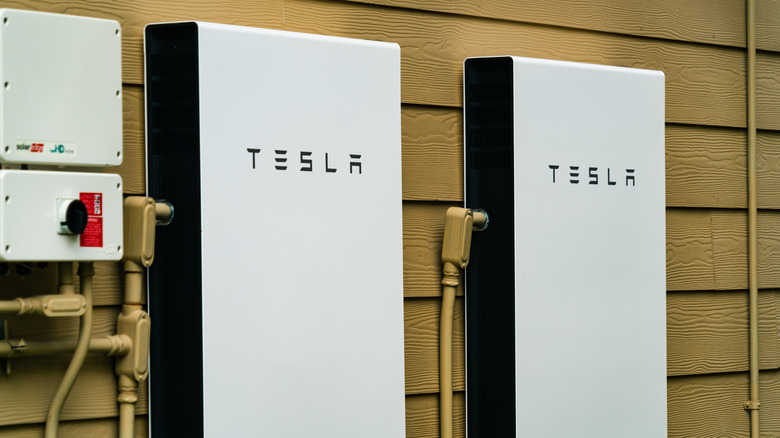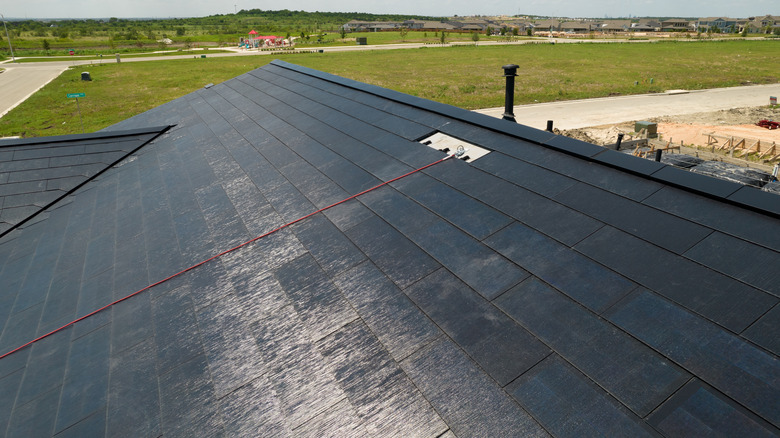This New Tax Credit Could Help You Save Big On A Tesla Powerwall Or Solar Roof In 2023
Energy bills have drastically increased in recent months, but there are ways to reduce the amount you end up paying to the electricity company. At-home renewable sources like solar panels, or even a solar roof from Tesla, may have high initial costs, but could save you thousands of dollars long-term. And now, thanks to a tax credit that was recently introduced, you could get even more money back.
The credit also applies to Tesla's Powerwall, a battery system that can be installed on the walls of your home and used to store the power that solar panels or a solar roof generates. This is quite handy, as we don't only use electricity when the sun is shining. The ability to store the power solar devices generate decreases wastage and increases the savings renewable energy can provide.
You can only purchase a Powerwall through Tesla, solar panels or a solar roof must be purchased at the same time, and the thing is pricy at over $11,000 per unit. But they are good at what they do, with one unit being capable of powering a two bedroom house for 24 hours. Powerwalls are also capable of heating and cooling themselves to ensure they are within their recommended operating temperatures. They are also guaranteed for 10 years.
A solar roof is also an expensive option, but essentially turns your roof's shingles into solar panels. This is more aesthetically pleasing than the standard bolt-on panels, and can cover a far larger surface area and potentially generate more power as a result. While all of this is expensive, Uncle Sam is there to help you out a little, and a new tax credit may make a big difference.
Save a small fortune on at home renewables
If you're planning on making the upgrade, a new tax credit system called the Residential Clean Energy Property Credit might save you a significant chunk of money. Unlike most renewable energy tax credits, there is no hard dollar limit on the amount you can claim through the Residential Clean Energy Property Credit. Homeowners can claw back up to 30% of their expenses when buying and installing solar panels or a solar roof. There is a limit applied to fuel cell property expenditures, but that limit is fairly generous.
If your fuel cell qualifies, you can claim up to 30% back — capped at $500 per half kilowatt of the cell's capacity. The IRS has also said that a property with multiple residents can claim up to $1,667 per half kilowatt of capacity in a calendar year. Traditional building materials, such as asphalt shingles, don't qualify for the credit. But as products like Tesla's solar roof "serve as solar electric collectors while also performing the function of traditional roofing," the government has explicitly stated that it does qualify for the rebate.
The rebate can also be applied to other green energy producing devices such as small wind turbines, geothermal heat pumps, and solar water heaters. Either way, rising energy costs and generous government subsidies may mean it's the ideal time to work towards making your home energy independent.

